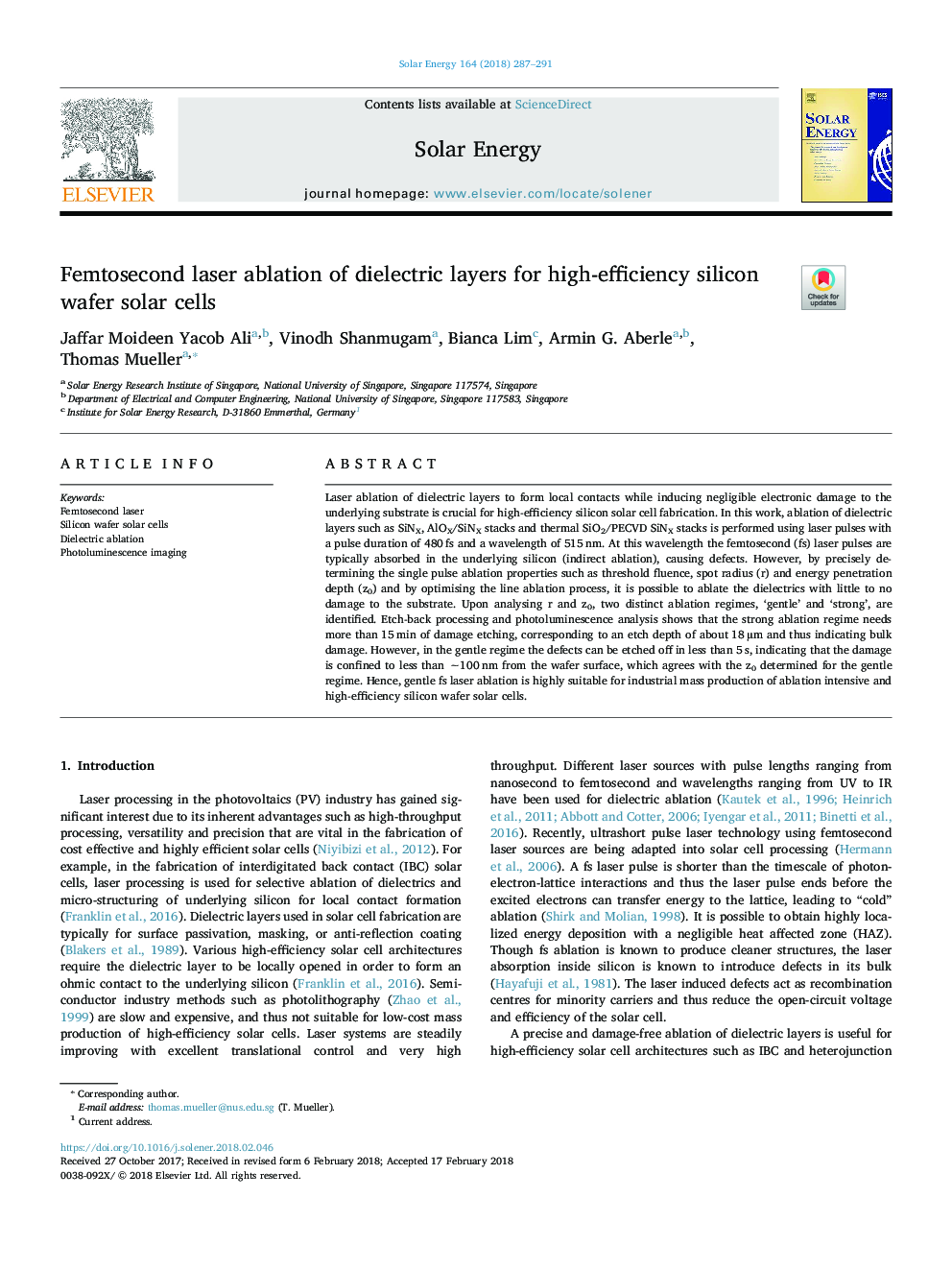| Article ID | Journal | Published Year | Pages | File Type |
|---|---|---|---|---|
| 7935438 | Solar Energy | 2018 | 5 Pages |
Abstract
Laser ablation of dielectric layers to form local contacts while inducing negligible electronic damage to the underlying substrate is crucial for high-efficiency silicon solar cell fabrication. In this work, ablation of dielectric layers such as SiNX, AlOX/SiNX stacks and thermal SiO2/PECVD SiNX stacks is performed using laser pulses with a pulse duration of 480â¯fs and a wavelength of 515â¯nm. At this wavelength the femtosecond (fs) laser pulses are typically absorbed in the underlying silicon (indirect ablation), causing defects. However, by precisely determining the single pulse ablation properties such as threshold fluence, spot radius (r) and energy penetration depth (z0) and by optimising the line ablation process, it is possible to ablate the dielectrics with little to no damage to the substrate. Upon analysing r and z0, two distinct ablation regimes, 'gentle' and 'strong', are identified. Etch-back processing and photoluminescence analysis shows that the strong ablation regime needs more than 15â¯min of damage etching, corresponding to an etch depth of about 18â¯Âµm and thus indicating bulk damage. However, in the gentle regime the defects can be etched off in less than 5â¯s, indicating that the damage is confined to less than â¼100â¯nm from the wafer surface, which agrees with the z0 determined for the gentle regime. Hence, gentle fs laser ablation is highly suitable for industrial mass production of ablation intensive and high-efficiency silicon wafer solar cells.
Related Topics
Physical Sciences and Engineering
Energy
Renewable Energy, Sustainability and the Environment
Authors
Jaffar Moideen Yacob Ali, Vinodh Shanmugam, Bianca Lim, Armin G. Aberle, Thomas Mueller,
